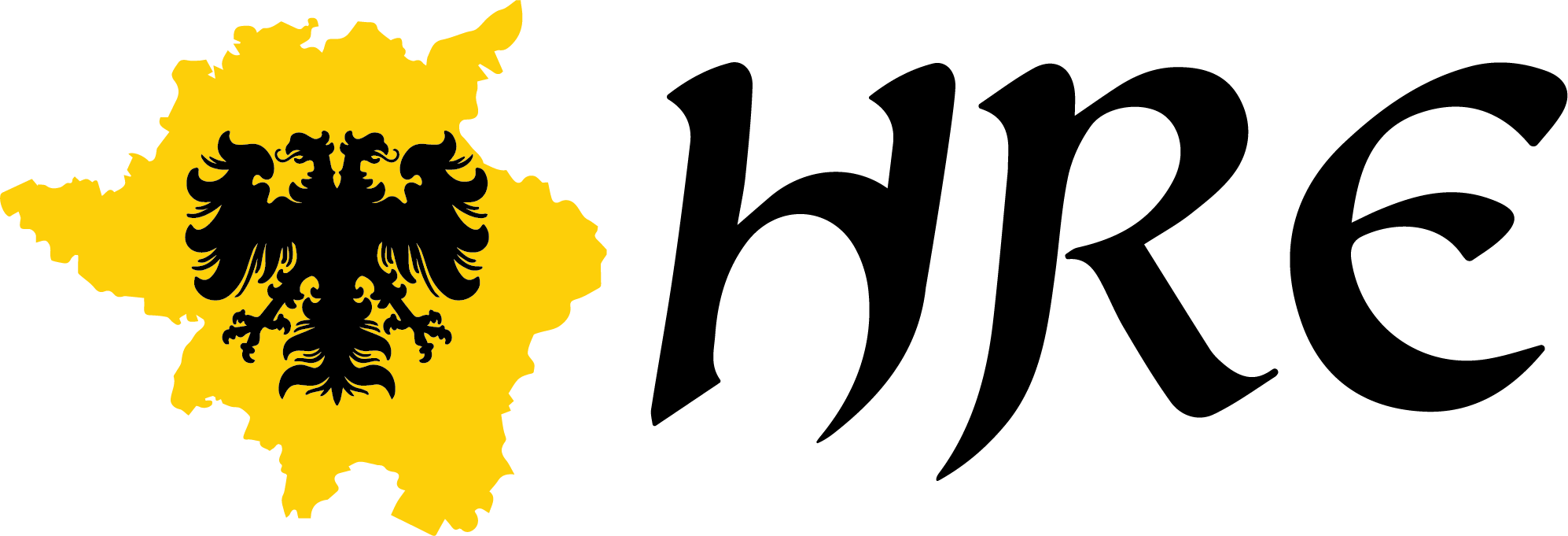Oberamt Jülich
Jülich has existed since Roman times, served as the seat of the Jülichgau during the Carolingian period, and as the seat of the County/Duchy of Jülich when it emerged in the 12th century. It received city rights in 1234.
Initially, the Amt surrounding Jülich included as many as eight Dingstühle and Gerichte. Eventually, seven of them consolidated into Amt Jülich (with no subdivisions) and Dingstuhl Barmen und Koslar retained its identity. Amt Aldenhoven was initially a distinct entity, what became Amt Eschweiler was part of Amt Wilhelmstein, and the Dingstühle of Pier und Merken were part of Amt Düren. At some point, Stadt Jülich, the three Ämter, and the three Dingstühle were assembled into Oberamt Jülich, while retaining their identities as subdivisions thereof (except that Pier and Merken merged into a single Dingstuhl). Because I do not know with any precision when those consolidations happened, I effectively assume that they happened in or before 1521, when the database for this region begins (although some certainly occurred later).
Furthermore, several villages on the boundary between Amt Eschweiler and Amt Wilhelmstein were originally split between the two Ämter. In the late 17th century, those villages were assigned to one Amt or the other so that they were no longer split. I treat all such villages as belonging to the Amt they were assigned to at that time, even during the period in which they were split. (Indeed, I ignore all instances in which villages were split between two Ämter within the Duchy. Instead, I typically assign the village to the Amt in which more of the people lived. When a village was split between the Duchy and a neighboring country, however, I recognize the split.)
The Stadt, Ämter, and Dingstühle were legal subdivisions of the Duchy and were administered by appointees of the Duke. In contrast, other subdivisions of the Duchy, known as Herrschaften and Herrlichkeiten, were not legally part of the Oberamt, but were typically grouped with it for statistical purposes. They were administered either by local nobles or, on occasion, by foreigners. There are enough of them associated with this Oberamt to warrant their own page.
List of villages in Hauptstadt or Amt Jülich
- Altdorf 1521 - 1794
- Ameln 1521 - 1794
- Bourheim 1521 - 1794
- Broich [Jülich] 1521 - 1794
- Hasselsweiler 1521 - 1794
- Inden 1521 - 1794
- Jackerath 1521 - 1794
- Kirchberg 1521 - 1794
- Mersch 1521 - 1794
- Mündt 1521 - 1794
- Opherten 1521 - 1794
- Pattern b. Aldenhoven 1521 - 1794
- Pattern b. Mersch 1521 - 1794
- Sevenich 1521 - 1794
- Spiel 1521 - 1794
- Stetternich 1521 - 1794
- Titz 1521 - 1794
- Welldorf 1521 - 1794
List of villages in Amt Aldenhoven
- Aldenhoven [Düren] 1521 - 1794
- Baesweiler 1521 - 1794
- Dürboslar 1521 - 1794
- Ederen 1521 - 1794
- Floverich 1521 - 1794
- Freialdenhoven 1521 - 1794
- Frohnhoven 1521 - 1794
- Gereonsweiler 1521 - 1794
- Hehlrath 1521 - 1794
- Hoengen 1521 - 1794
- Lohn 1521 - 1794
- Loverich 1521 - 1794
- Oidtweiler 1521 - 1794
- Puffendorf 1521 - 1794
- Schleiden 1521 - 1794
- Siersdorf 1521 - 1794
List of villages in Amt Eschweiler
- Bergrath 1521 - 1794
- Bettendorf 1521 - 1794
- Donnerberg 1521 - 1794
- Eschweiler [Aachen] 1521 - 1794
- Frankenberg 1521 - 1794
- Kellersberg 1521 - 1794
- Pumpe 1521 - 1794
- Röhe 1521 - 1794
- Röthgen 1521 - 1794
- Schaufenberg [Alsdorf] 1521 - 1794
List of villages in Dingstuhl Pier und Merken
- Jüngersdorf 1521 - 1794
- Luchem 1521 - 1794
- Lucherberg 1521 - 1794
- Merken 1521 - 1794
- Pier 1521 - 1794
- Pommenich 1521 - 1794
- Schophoven 1521 - 1794
- Stütgerloch 1521 - 1794
- Vilvenich 1521 - 1794
List of villages in Dingstuhl Barmen und Koslar
- Barmen [Jülich] 1521 - 1794
- Engelsdorf [Aldenhoven] 1521 - 1794
- Floßdorf 1521 - 1794
- Koslar 1521 - 1794
- Merzenhausen 1521 - 1794
Chronological list of countries to which Oberamt Jülich belonged
- Duchy of Jülich (in personal union with Cleves) 1521 - 1614
- Duchy of Jülich 1614 - 1690
- Duchy of Jülich (in personal union with the Palatinate Electorate) 1690 - 1777
- Duchy of Jülich (in personal union with Palatinate-Bavaria) 1777 - 1794
